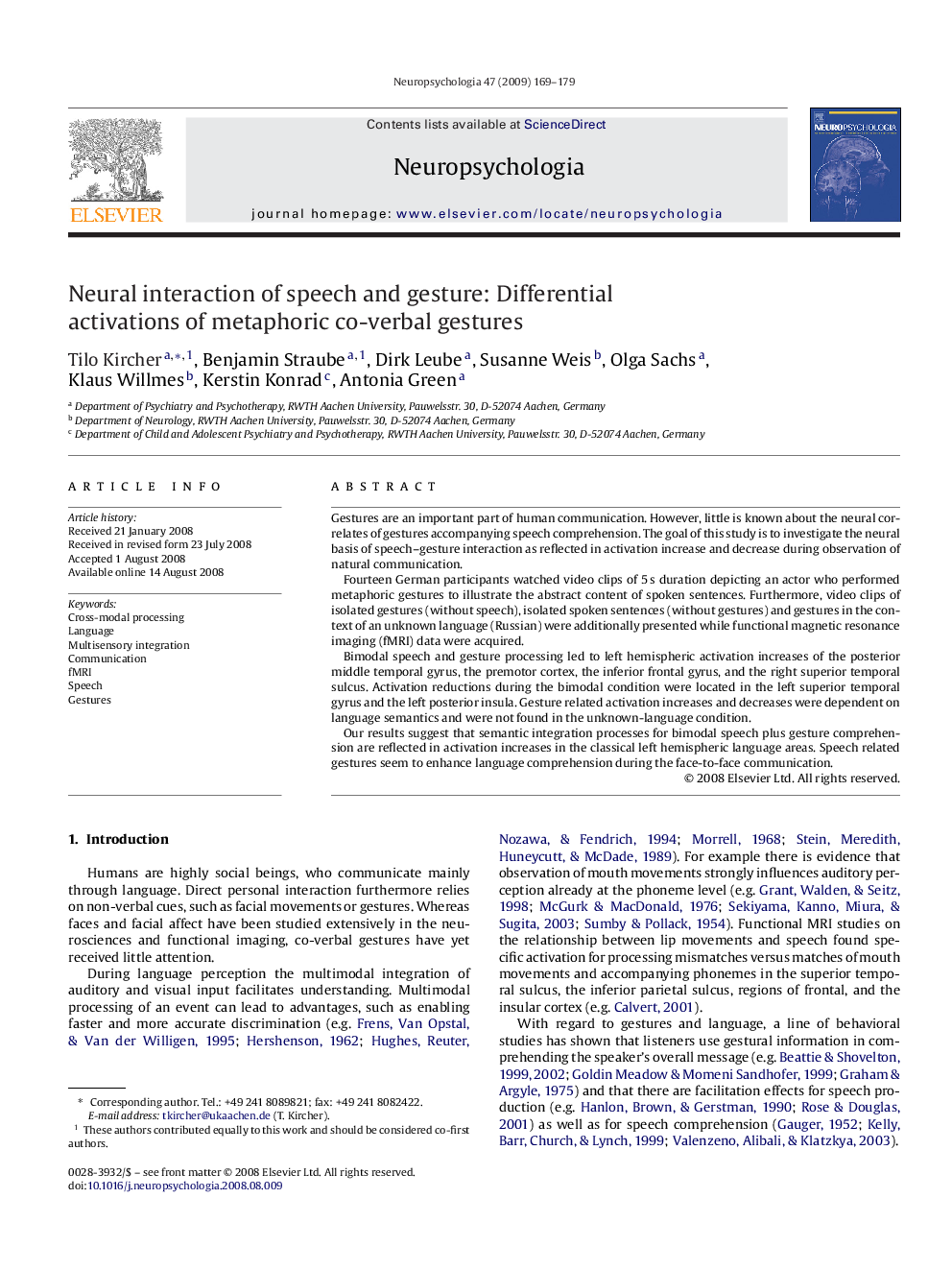| Article ID | Journal | Published Year | Pages | File Type |
|---|---|---|---|---|
| 945211 | Neuropsychologia | 2009 | 11 Pages |
Gestures are an important part of human communication. However, little is known about the neural correlates of gestures accompanying speech comprehension. The goal of this study is to investigate the neural basis of speech–gesture interaction as reflected in activation increase and decrease during observation of natural communication.Fourteen German participants watched video clips of 5 s duration depicting an actor who performed metaphoric gestures to illustrate the abstract content of spoken sentences. Furthermore, video clips of isolated gestures (without speech), isolated spoken sentences (without gestures) and gestures in the context of an unknown language (Russian) were additionally presented while functional magnetic resonance imaging (fMRI) data were acquired.Bimodal speech and gesture processing led to left hemispheric activation increases of the posterior middle temporal gyrus, the premotor cortex, the inferior frontal gyrus, and the right superior temporal sulcus. Activation reductions during the bimodal condition were located in the left superior temporal gyrus and the left posterior insula. Gesture related activation increases and decreases were dependent on language semantics and were not found in the unknown-language condition.Our results suggest that semantic integration processes for bimodal speech plus gesture comprehension are reflected in activation increases in the classical left hemispheric language areas. Speech related gestures seem to enhance language comprehension during the face-to-face communication.
